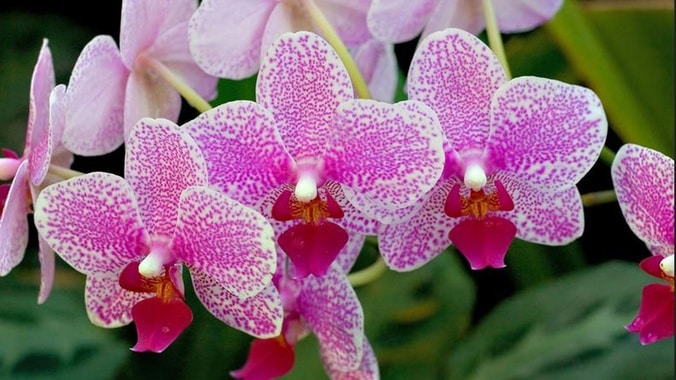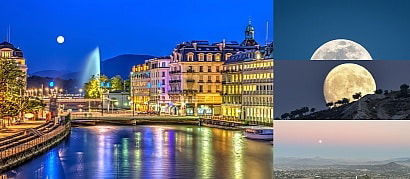Sublime Orchids
Orchids are plants that belong to the family Orchidaceae, a diverse and widespread group of flowering plants with blooms that are often colourful and fragrant.
Orchids are cosmopolitan plants that are found in almost every habitat on Earth except glaciers. The world's richest diversity of orchid genera and species is found in the tropics.
Orchidaceae, called in English, was known to the Greeks as Orchis 2000 years ago. Orchis refers to the Orchis Morio, which is still in that region. The name means “testicle” for obvious reasons when looking at the root. During the Roman period (A.D. 476), the orchid roots were eaten or steeped as an aphrodisiac.
In the 19th Century and the coming of the industrial age, it became easier to transplant orchids from the tropics to civilization. Advances in glass manufacturing facilitated the construction of greenhouses. This fueled the enthusiasm for propagating orchids under controlled conditions where the wealthy, cultured society competed to collect rare and beautiful specimens.
The orchid forms one of the largest families in the plant kingdom, with over 25,000 species worldwide. With modern scientific cultivation, varieties of orchids are increasing.
The first recorded mention of orchids is in Inquiry into Plants, dated around 300 B.C., by Theophrastus, a student of Aristotle. Dioscorides, a Greek medical botanist and physician, first identified them clearly as "orchids" in the 1st century, whose De Materia Medica was a standard reference until the Middle Ages.
Confucius kept orchids for bliss. In Asia, great philosopher and statesman Confucius kept orchids in his rooms and wrote poems praising their fragrance.
Confucius was an admirer of orchids and in this quote he captures the quality of the epiphytes in this eloquent translation :
“The orchid grows where others cannot enduring the hardships of hunger and thirst, and is loosely tied to the things that support it. And, even with all the difficulty of its life, the orchid graces the world with beautiful colour and rare fragrance. This is like the life of the true gentleman, who sets himself to learn self-discipline, and whose character shines no matter where he is or what he experiences.”
Orchids are cosmopolitan plants that are found in almost every habitat on Earth except glaciers. The world's richest diversity of orchid genera and species is found in the tropics.
Orchidaceae, called in English, was known to the Greeks as Orchis 2000 years ago. Orchis refers to the Orchis Morio, which is still in that region. The name means “testicle” for obvious reasons when looking at the root. During the Roman period (A.D. 476), the orchid roots were eaten or steeped as an aphrodisiac.
In the 19th Century and the coming of the industrial age, it became easier to transplant orchids from the tropics to civilization. Advances in glass manufacturing facilitated the construction of greenhouses. This fueled the enthusiasm for propagating orchids under controlled conditions where the wealthy, cultured society competed to collect rare and beautiful specimens.
The orchid forms one of the largest families in the plant kingdom, with over 25,000 species worldwide. With modern scientific cultivation, varieties of orchids are increasing.
The first recorded mention of orchids is in Inquiry into Plants, dated around 300 B.C., by Theophrastus, a student of Aristotle. Dioscorides, a Greek medical botanist and physician, first identified them clearly as "orchids" in the 1st century, whose De Materia Medica was a standard reference until the Middle Ages.
Confucius kept orchids for bliss. In Asia, great philosopher and statesman Confucius kept orchids in his rooms and wrote poems praising their fragrance.
Confucius was an admirer of orchids and in this quote he captures the quality of the epiphytes in this eloquent translation :
“The orchid grows where others cannot enduring the hardships of hunger and thirst, and is loosely tied to the things that support it. And, even with all the difficulty of its life, the orchid graces the world with beautiful colour and rare fragrance. This is like the life of the true gentleman, who sets himself to learn self-discipline, and whose character shines no matter where he is or what he experiences.”
Added to
People who voted for this also voted for
"old school" beauty 4
Favorite TV Westerns
Images Posted 40s IV - Movies
Clark Gable - Movies I've Viewed
Vera Miles - Movies
Louise Beavers - Movies
Finlay Currie - Movies I've Viewed
Felix Aylmer - Movies I've Viewed
Audrey Hepburn - Movies I've Viewed
Loretta Young - Some Movies
Sam Jaffe Movies
Hugh Griffith - Movies I've Viewed
James Mason - Movies I've Viewed
Images Posted 30s II- Movies
Pictures Posted by Kandi XLIII
More lists from James OK
Beautiful Lithuania
Some Evocative Images
Sorbet albeit not quite Sherbet
Beauty Bomb Portraits
August’s Rare Super Blue Moon
Favorite Models by James OK
Decadent desserts : good for the mood
 Login
Login












































